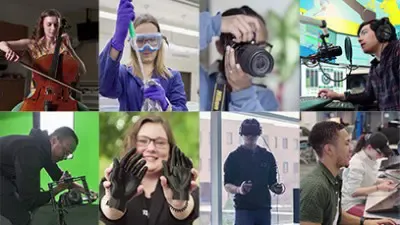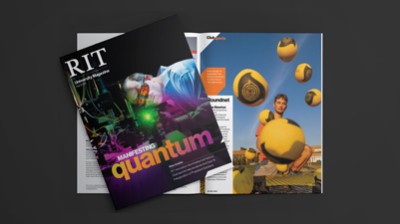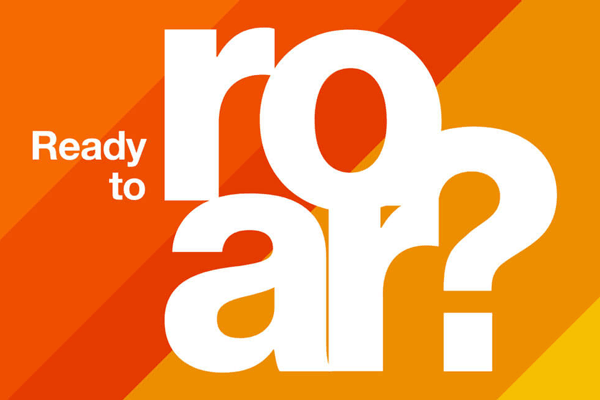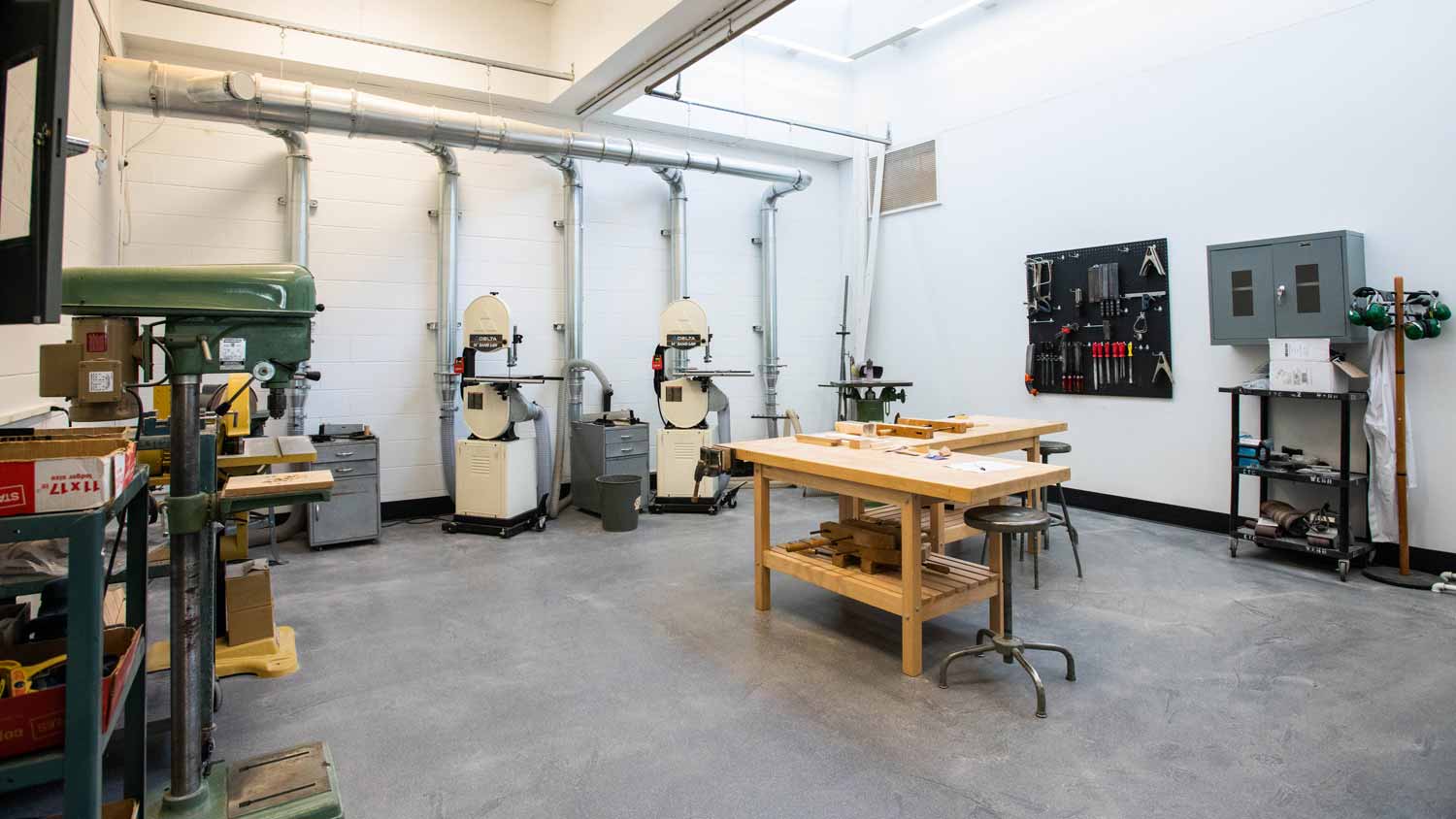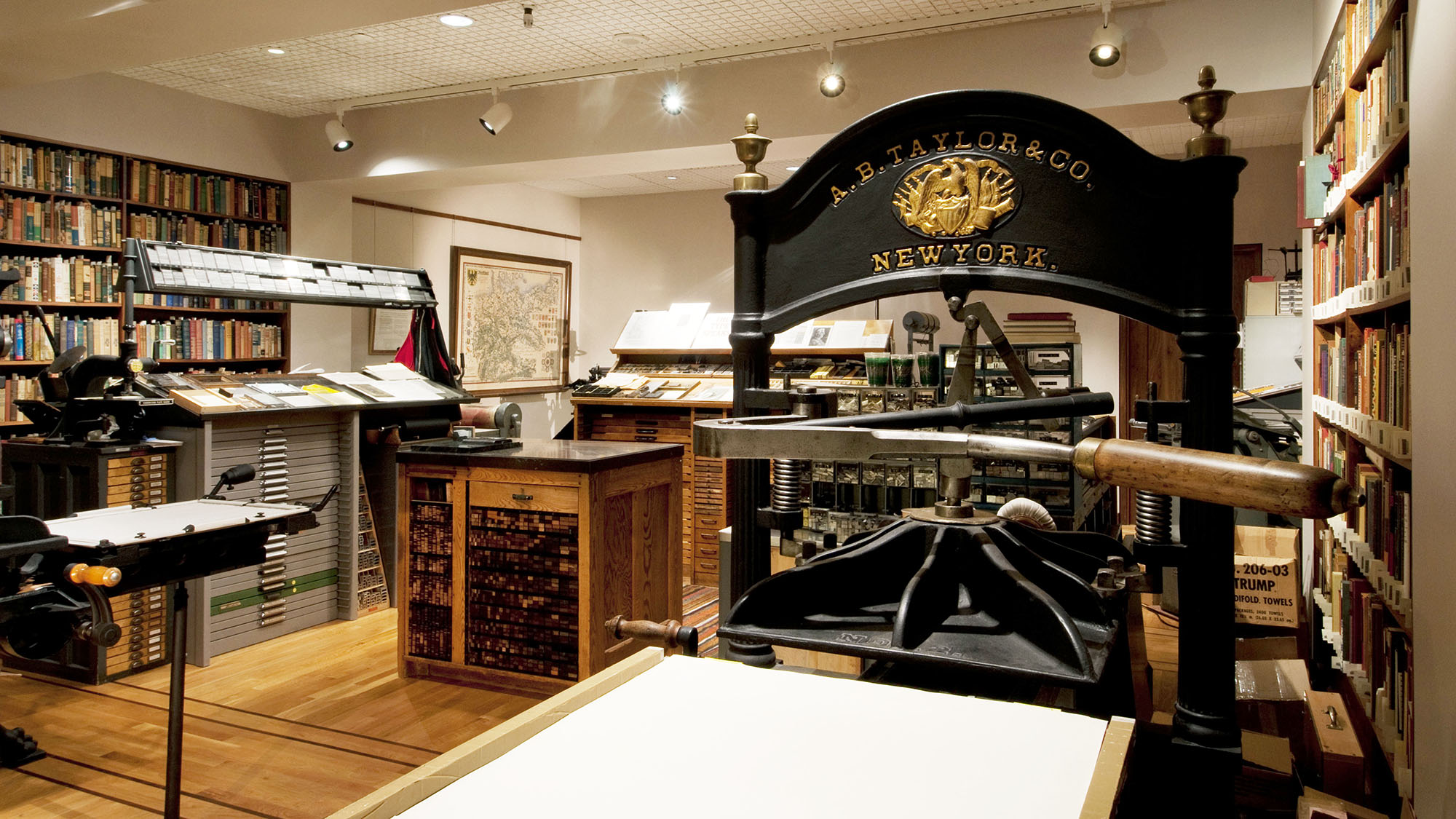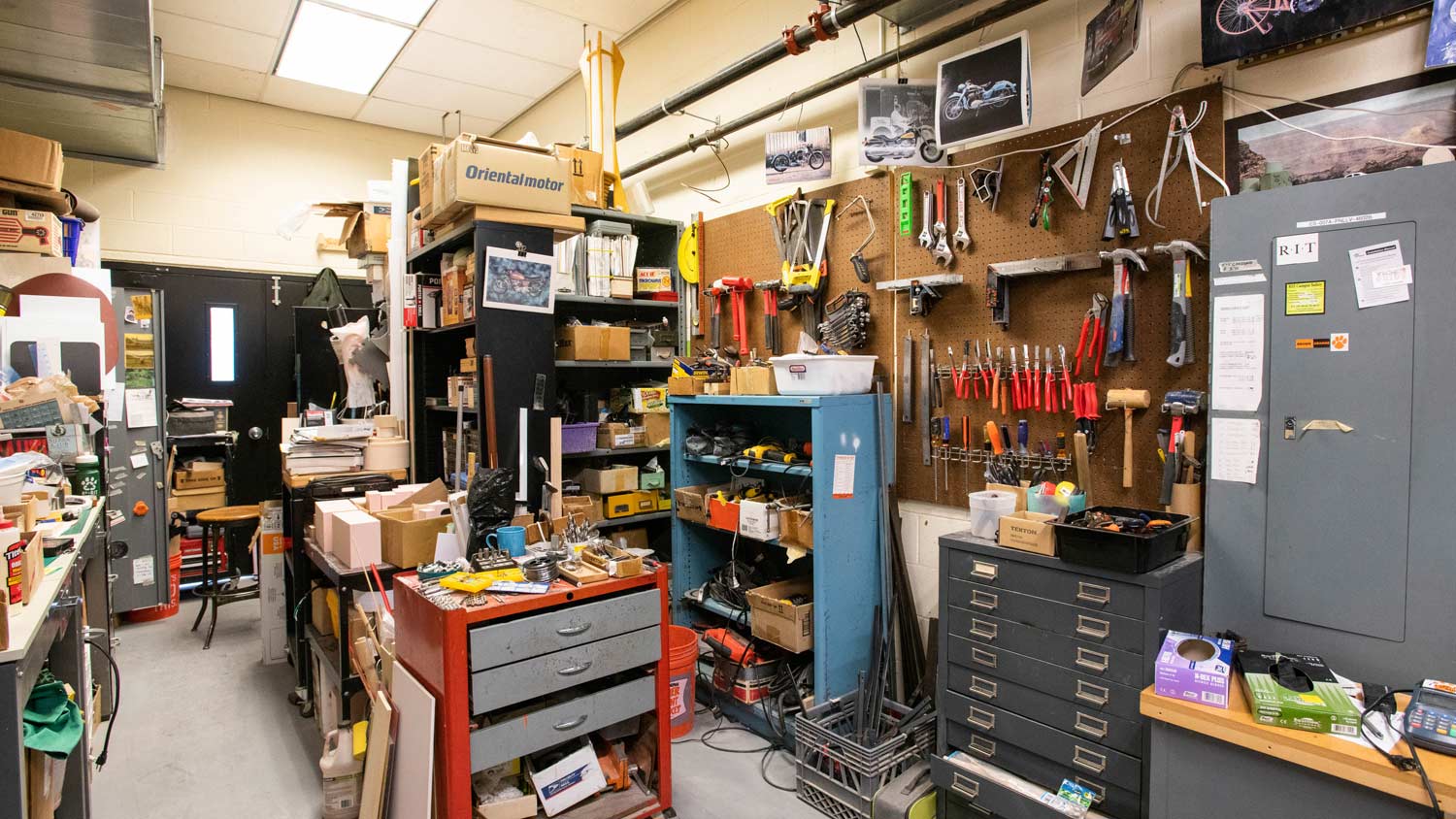Industrial Design Bachelor of Fine Arts Degree
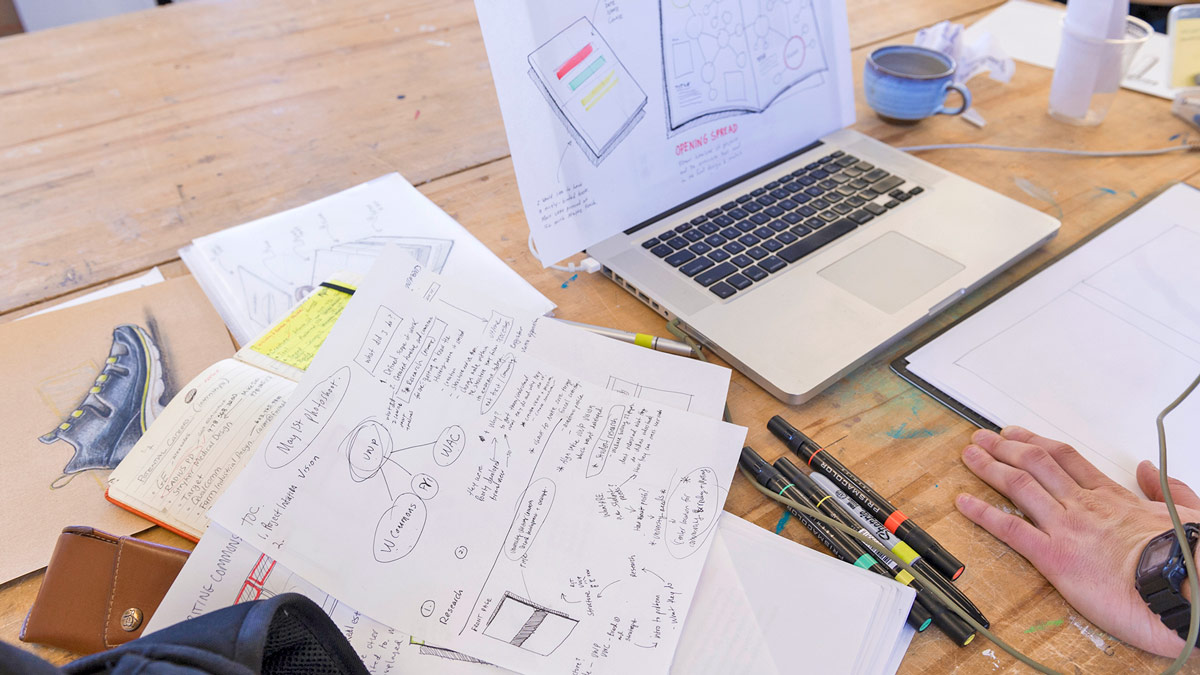
Industrial Design
Bachelor of Fine Arts Degree
- RIT /
- Rochester Institute of Technology /
- Academics /
- Industrial Design BFA
In RIT’s industrial design BFA, you’ll create and develop innovative products for both consumers and manufacturers with your choice of diverse industries to work in.
$60K
Average First-Year Salary of RIT Graduates from this degree
Overview for Industrial Design BFA
Why Study Industrial Design at RIT
Accelerated Degree Option: RIT’s 4+2 BFA/M.Arch. enables you to complete your industrial design degree and enter the second year of RIT’s master of architecture degree with advanced standing.
Industry Standard Technology: Our Fab Lab is equipped with 12 3D printers, in addition to laser cutters, CNC routing devices, and other technology, all for you to utilize when completing projects and class assignments.
Gain Real-World Experience: Six designs from Metaproject, the industrial design senior project, are currently in production at various companies.
Award Winning: RIT's School of Design, which houses the industrial design major, is ranked among the best, with Business Week naming it one of the top 10 design schools in the country.
From athletic wear and home goods to stereo systems and medical devices, there are a variety of industries that RIT’s industrial Design prepares you for. Learn how to create and develop inventive products for both consumers and manufacturers in an industry of interest to you.
What is Industrial Design?
Industrial design is a field of design that focuses on the creation of products, systems, and services that are both aesthetically pleasing and functional. It involves the process of designing and developing the appearance, ergonomics, usability, and user experience of various products and objects that are mass-produced for mass consumption.
Industrial designers work to improve the functionality, usability, and visual appeal of products across a wide range of industries, including consumer electronics, furniture, automobiles, appliances, medical devices, and more. They collaborate with engineers, marketers, and manufacturers to create products that meet the needs and preferences of consumers while also considering factors such as cost, sustainability, and manufacturing feasibility.
RIT’s BFA in Industrial Design Courses
RIT's industrial design BFA gives you the knowledge and skills needed to succeed as an industrial product designer and produce products used by factories, businesses, and everyday people.
This industrial product design degree blends technical instruction with studio assignments. You will develop the aesthetic sensitivity, technical competence, and the analytical thinking needed to improve the user experience and design products that meet human needs.
The industrial design degree integrates major courses in package, exhibit, and furniture design. In addition to a mix of studio and open electives, the liberal arts, and art history electives. Bring your conceptual ideas to life in product design courses by developing your technical 2D communications skills and 3D prototyping ability, then learn how to formally move your ideas and products to the marketplace. These industrial design courses incorporate developing expertise in other areas like:
- Computer skills
- Design perspectives
- Career preparation
You will also be exposed to the related areas of:
- Photography
- Engineering
- Information technology
Furthering Your Education in Industrial Design
Combined Accelerated Bachelor’s/Master’s Degrees
Today’s careers require advanced degrees grounded in real-world experience. RIT’s Combined Accelerated Bachelor’s/Master’s Degrees enable you to earn both a bachelor’s and a master’s degree in as little as five years of study, all while gaining the valuable hands-on experience that comes from co-ops, internships, research, study abroad, and more.
- 4+2 BFA/M.Arch. Pathway: A BFA degree takes four years to complete and an M.Arch. degree typically takes an additional three to four years. In RIT’s 4+2 BFA/M.Arch. Pathway, you’ll complete a BFA in industrial design or interior design and then enter the second year of RIT’s NAAB-accredited master of architecture degree with advanced standing. Learn how this accelerated pathway enables you to earn a BFA and an M.Arch. degree in as little as six years, saving you time and money.
- +1 MBA: Students who enroll in a qualifying undergraduate degree have the opportunity to add an MBA to their bachelor’s degree after their first year of study, depending on their program. Learn how the +1 MBA can accelerate your learning and position you for success.
Professional Organizations
The School of Design maintains memberships in a variety of professional organizations, including Industrial Designers Society of America, ACM Siggraph, Society of Environmental Graphic Designers, American Society of Interior Designers, American Institute of Architects, ICOGRADA, American Institute of Graphic Arts, and International Interior Design Association.
-
Join Us for Accepted Student Open House
Visit campus on March 28 or April 11 to meet faculty, tour campus, and ask your questions.
-
Apply for Fall 2026
First-year students can apply for Early Decision II by Jan. 1 to get an admissions and financial aid assessment by mid-January.
Careers and Experiential Learning
Typical Job Titles
| Creative Director | Creative Designer | Entrepreneur |
| Ergonomist | Ethnographer | Industrial Designer |
| Product Designer | Researcher | Softgoods Designer |
| Structural Designer | User Experience (UX) Designer |
Industries
-
Consumer Packaged Goods
-
Design
-
Fashion
-
Manufacturing
Cooperative Education and Internships
What’s different about an RIT education? It’s the career experience you gain by completing cooperative education and internships with top companies in every single industry. You’ll earn more than a degree. You’ll gain real-world career experience that sets you apart. It’s exposure–early and often–to a variety of professional work environments, career paths, and industries.
Co-ops and internships take your knowledge and turn it into know-how. Your art and design co-ops will provide hands-on experience that enables you to apply your artistic capabilities in dynamic professional settings while you make valuable connections between classwork and real-world applications.
Cooperative education, internships, and other experiential learning opportunities are strongly encouraged for students in the BFA in industrial design.
Creative Industry Days
Connect with Design Industry Leaders
RIT’s Office of Career Services and Cooperative Education hosts Creative Industry Days, which connects students majoring in art, design, film and animation, photography, and select computing majors with companies, organizations, creative agencies, design firms, and more. Creative Industry Days are a series of events that allow you to network with company representatives and interview directly for open co-op and full-time employment positions.
Featured Work and Profiles
-
German Design Fellowship
Daeya Shealy '21 (Industrial Design) earned a Congress-Bundestag Youth Exchange for Young Professionals fellowship to study and work as a designer in Germany for one year.
Read More about German Design Fellowship -
Medical Device Designs
RIT students in the Industrial Design (BFA and MFA) and Graphic Design programs showcased the power of industry partnership as they worked with medical technology company Stryker to design home...
Read More about Medical Device Designs -
Mobile Kitchen Design
A multidisciplinary team of RIT Interior Design and Industrial Design students designed the Mobile Kitchen, which can be easily transformed for users with different needs and abilities. They exhibited...
Read More about Mobile Kitchen Design -
Metaproject 15: Contemporary Furniture Solutions
RIT industrial design students worked alongside Icon Design to develop unique furniture solutions for the contemporary furniture company throughout the 2024 fall semester.
Read More about Metaproject 15: Contemporary Furniture Solutions -
RIT partnership with Autodesk
Alex Lobos RIT industrial design BFA and MFA students collaborated with Autodesk to design the Autodesk MultiMeasure, a compact device that debuted at Autodesk University 2025. The global software and technology...
Read More about RIT partnership with Autodesk -
Lamp Design
Lori Resch A lamp that allows for several different lighting conditions was designed by Lori Resch, lecturer of industrial design, during the Vignelli Center for Design Studies’ Summer Design Workshop. Whether a...
Read More about Lamp Design
Curriculum for 2025-2026 for Industrial Design BFA
Current Students: See Curriculum Requirements
Admissions and Financial Aid
First-Year Admission
First-year applicants are expected to demonstrate a strong academic background that includes:
- 4 years of English
- 3 years of social studies and/or history
- 3-4 years of mathematics
- 2-3 years of science
- Studio art experience and a portfolio of original artwork are required. View Portfolio Requirements for more information.
Transfer Admission
Transfer applicants should meet these minimum degree-specific requirements:
- Studio art or design experience and a portfolio of original artwork are required. View Portfolio Requirements for more information.
Financial Aid and Scholarships
100% of all incoming first-year and transfer students receive aid.
RIT’s personalized and comprehensive financial aid program includes scholarships, grants, loans, and campus employment programs. When all these are put to work, your actual cost may be much lower than the published estimated cost of attendance.
Learn more about financial aid and scholarships
Accreditation
Related News
-
December 9, 2025
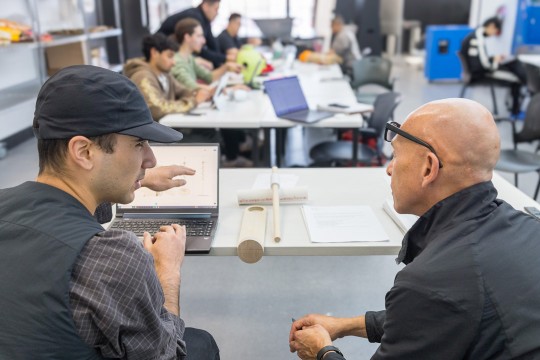
Industrial design students impress clients through a semester-long collaboration
Giving students an authentic working experience is the goal of Metaproject, an annual design initiative that pairs students with industry partners to develop product concepts. This year's partner is led by two university alumni.
-
October 21, 2025

RIT faculty and students win Best Original Design at international charity competition
A multidisciplinary team of students and faculty continued an RIT tradition of participating in Canstruction Rochester by making EVE from WALL-E out of more than 2,400 canned goods.
-
October 7, 2025

RIT alumni turn shared experiences into growing outdoor brand
Four RIT alumni and former student-athletes have turned locker-room bonds and an entrepreneurial drive into a growing company.
Contact
- Melissa Dawson
- Associate Professor, Art - Design and Applied Arts
- School of Design
- College of Art and Design
- 585‑475‑5647
- mdmfaa@rit.edu
School of Design
